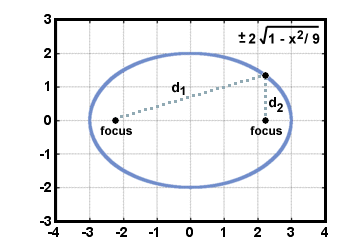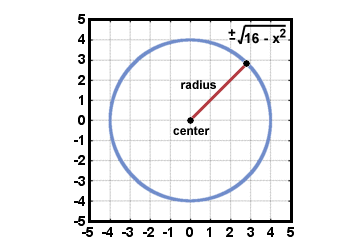Please wait while we process your payment
Please wait while we process your payment
If you don't see it, please check your spam folder. Sometimes it can end up there.
If you don't see it, please check your spam folder. Sometimes it can end up there.
Please wait while we process your payment

By signing up you agree to our terms and privacy policy.
Don’t have an account? Subscribe now
Create Your Account
Sign up for your FREE 7-day trial
By signing up you agree to our terms and privacy policy.
Already have an account? Log in
Your Email
Choose Your Plan
Individual
Group Discount
Save over 50% with a SparkNotes PLUS Annual Plan!
 payment page
payment page
Purchasing SparkNotes PLUS for a group?
Get Annual Plans at a discount when you buy 2 or more!
Price
$24.99 $18.74 /subscription + tax
Subtotal $37.48 + tax
Save 25% on 2-49 accounts
Save 30% on 50-99 accounts
Want 100 or more? Contact us for a customized plan.
 payment page
payment page
Your Plan
Payment Details
Payment Summary
SparkNotes Plus
You'll be billed after your free trial ends.
7-Day Free Trial
Not Applicable
Renews July 18, 2025 July 11, 2025
Discounts (applied to next billing)
DUE NOW
US $0.00
SNPLUSROCKS20 | 20% Discount
This is not a valid promo code.
Discount Code (one code per order)
SparkNotes PLUS Annual Plan - Group Discount
Qty: 00
SparkNotes Plus subscription is $4.99/month or $24.99/year as selected above. The free trial period is the first 7 days of your subscription. TO CANCEL YOUR SUBSCRIPTION AND AVOID BEING CHARGED, YOU MUST CANCEL BEFORE THE END OF THE FREE TRIAL PERIOD. You may cancel your subscription on your Subscription and Billing page or contact Customer Support at custserv@bn.com. Your subscription will continue automatically once the free trial period is over. Free trial is available to new customers only.
Choose Your Plan
This site is protected by reCAPTCHA and the Google Privacy Policy and Terms of Service apply.
For the next 7 days, you'll have access to awesome PLUS stuff like AP English test prep, No Fear Shakespeare translations and audio, a note-taking tool, personalized dashboard, & much more!
You’ve successfully purchased a group discount. Your group members can use the joining link below to redeem their group membership. You'll also receive an email with the link.
Members will be prompted to log in or create an account to redeem their group membership.
Thanks for creating a SparkNotes account! Continue to start your free trial.
We're sorry, we could not create your account. SparkNotes PLUS is not available in your country. See what countries we’re in.
There was an error creating your account. Please check your payment details and try again.
Please wait while we process your payment

Your PLUS subscription has expired
Please wait while we process your payment
Please wait while we process your payment

Ellipses and Circles
An ellipse is the set of points such that the sum of the distances from any point on the ellipse to two other fixed points is constant. The two fixed points are called the foci (plural of focus) of the ellipse.

The line segment containing the foci of an ellipse with both endpoints on the ellipse is called the major axis. The endpoints of the major axis are called the vertices. The point halfway between the foci is the center of the ellipse. The line segment perpendicular to the major axis and passing through the center, with both endpoints on the ellipse, is the minor axis.
The standard equation of an ellipse with a horizontal major axis is the
following:  +
+  = 1. The center is
at (h, k). The length of the major axis is 2a, and the length of the minor
axis is 2b. The distance between the center and either focus is c, where
c2 = a2 - b2. Here a > b > 0.
= 1. The center is
at (h, k). The length of the major axis is 2a, and the length of the minor
axis is 2b. The distance between the center and either focus is c, where
c2 = a2 - b2. Here a > b > 0.
The standard equation of an ellipse with a vertical major axis is the following:
 +
+  = 1. The center is at (h, k).
The length of the major axis is 2a, and the length of the minor axis is 2b.
The distance between the center and either focus is c, where c2 = a2 - b2. Here a > b > 0.
= 1. The center is at (h, k).
The length of the major axis is 2a, and the length of the minor axis is 2b.
The distance between the center and either focus is c, where c2 = a2 - b2. Here a > b > 0.
The eccentricity of an ellipse is e =  . For any ellipse, 0 < e < 1. The eccentricity of an ellipse is basically a measure of the "ovalness"
of an ellipse. It is the ratio of the distance between the foci and the length
of the major axis. If the foci are very near the center of an ellipse, the
ellipse is nearly circular, and e is close to zero. If the foci are
relatively far away from the center, the ellipse is shaped more like an oval,
and e is closer to one.
. For any ellipse, 0 < e < 1. The eccentricity of an ellipse is basically a measure of the "ovalness"
of an ellipse. It is the ratio of the distance between the foci and the length
of the major axis. If the foci are very near the center of an ellipse, the
ellipse is nearly circular, and e is close to zero. If the foci are
relatively far away from the center, the ellipse is shaped more like an oval,
and e is closer to one.
A circle is the collection of points equidistant from a fixed point. The fixed point is called the center. The distance from the center to any point on the circle is the radius of the circle, and a segment containing the center whose endpoints are both on the circle is a diameter of the circle. The radius, r, equals one-half the diameter, d.

The standard equation for a circle is (x - h)2 + (y - k)2 = r2. The center is at (h, k). The radius is r.
In a way, a circle is a special case of an ellipse. Consider an ellipse whose
foci are both located at its center. Then the center of the ellipse is the
center of the circle, a = b = r, and e =  = 0.
= 0.
Please wait while we process your payment
